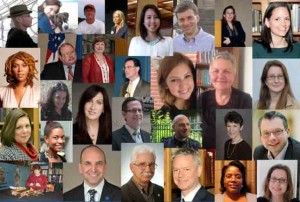The National Institutes of Health is currently undertaking a formal review of the National Library of Medicine. In response, the AHA issued a letter of support for the NLM in March, emphasizing its importance in providing resources for research on historical and current public health issues. This guest post by , chief of the History of Medicine Division at the NLM, details a few of the library’s most recent endeavors and explores the various ways that the library uses its resources and programs to further this knowledge.
Last month, as part of the program of the National History Center’s Washington History Seminar series, I offered a “report from the field” on the History of Medicine Division of the US National Library of Medicine (NLM), located on the campus of the National Institutes of Health (NIH) in Bethesda, Maryland. I appreciate this opportunity to expand on my report and share with a wider audience an overview of the NLM, its History of Medicine Division, and some of the division’s collections, programs, and resources for researching, teaching, and learning about the history of human health and disease.
An agency of the United States government, the NLM is a component of the NIH, one of the world’s foremost public research centers whose current director is the eminent physician, geneticist Francis S. Collins. Tracing its origins to the early 19th century, the NLM itself is the world’s largest biomedical library with a renowned collection of materials that span 10 centuries, originate from all parts of the globe, and encompass a wide variety of formats: from archives to monographs, audiovisuals to ephemera, books to journals, dissertations to pamphlets—as well as an expanding collection of born-digital materials that document recent events, like the 2014 Ebola outbreak, which will be tomorrow’s history.
Appreciating and Promoting NLM’s Historical Collections
In cooperation with our colleagues across the library and interested individuals from around the world, the NLM’s History of Medicine Division raises public awareness, appreciation, and understanding of the historical collections of the library in a variety of ways.
Our award-winning Exhibition Program develops and presents multi-format exhibitions and multidisciplinary educational tools that make the NLM’s collections and related resources available to audiences around the world. Through interactive exhibitions and special displays onsite, traveling banner shows that tour the world, and online K-12 and higher education resources, the Exhibition Program advances public awareness about medicine, science, and history. Exhibitions and special displays focus on a variety of topics including the history of forensic medicine, AIDS, US Civil War doctors, nurses, and disabled veterans; African American academic surgeons; and women physicians. One of our recent exhibitions, on the subject of biotechnology, entitled From DNA to Beer: Harnessing Nature in Medicine and Industry, was developed and produced in collaboration with the Smithsonian’s National Museum of American History.
We also feature the NLM’s historical collections through Hidden Treasure, a spectacular, 240-page, full-color book with 450 images and over 80 essays by distinguished scholars, artists, collectors, journalists, and physicians, and through our blog, Circulating Now, which offers a dynamic and constantly updated collection of articles based on the NLM’s historical collections. Circulating Now enables a chorus of voices to speak about the full range of the NLM’s historical collections––as well as our resources, activities and exhibitions, and the value of these resources for research, education, and learning about the past, present, and future of the human condition.
Contributors to our blog have included NLM staff, interns, and volunteers; scholars, educators, and students; as well as journalists and scientists. Our blog spotlights loans of NLM collection materials to qualifying institutions—including the Grolier Club in New York City and the Smithsonian’s Freer and Sackler Galleries—displays recent acquisitions, conducts interviews with individuals who have used our collections, and shares stories about VIPs who have visited the NLM, including David Ferriero, archivist of the United States; Johan Verbeke, ambassador of Belgium to the United States; William D. Adams, chair of the National Endowment for the Humanities; and Kerry Kelly Novick, daughter of Gene Kelly, who commented from her expertise in psychology on Combat Fatigue Irritability, a rare World War II film on directed by her father which the NLM holds in its vast historical audiovisual collections.
Embracing the Future as Stewards of the Past
There’s a lot more to news to share from the NLM’s History of Medicine Division. Our partnership with the Wellcome Library will be making the back issues of more medical historical journals freely available through on the NIH life sciences repository PubMed Central of over 3 million articles. Through our partnership with the National Endowment for the Humanities (NEH), and in cooperation with Virginia Tech, The Wellcome Library, and The Wellcome Trust,we will be hosting, in April 2016, an NEH-funded workshop entitled Images and Texts in Medical History: An Introduction to Methods, Tools, and Data from the Digital Humanities. The workshop will provide historians and librarians with a deeper appreciation of innovative methods and data sources useful for analyzing images and texts in the field of medical history.
I welcome you to learn more about us through our website, and through this article, in which I discuss in more detail how the NLM’s History of Medicine Division is embracing the future as a steward of the past.
Featured image: Entrance to the National Library of Medicine, October 9, 2008. Uploaded to Wikipedia by Ragesoss. CC BY-SA 3.0.
This post first appeared on AHA Today.
This work is licensed under a Creative Commons Attribution-NonCommercial-NoDerivatives 4.0 International License. Attribution must provide author name, article title, Perspectives on History, date of publication, and a link to this page. This license applies only to the article, not to text or images used here by permission.






